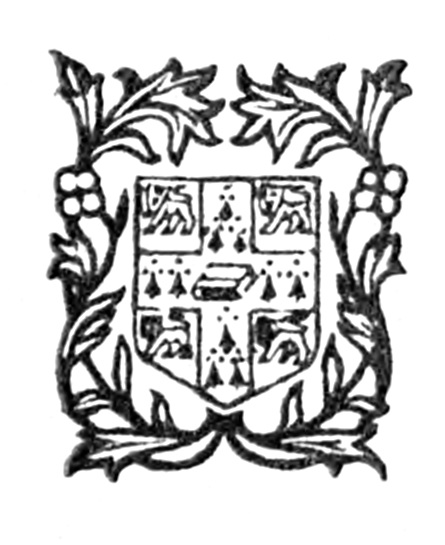|
Rogers–Szegő Polynomials
In mathematics, the Rogers–Szegő polynomials are a family of polynomials orthogonal on the unit circle introduced by , who was inspired by the continuous ''q''-Hermite polynomials studied by Leonard James Rogers. They are given by :h_n(x;q) = \sum_^n\fracx^k where (''q'';''q'')''n'' is the descending q-Pochhammer symbol In mathematical area of combinatorics, the ''q''-Pochhammer symbol, also called the ''q''-shifted factorial, is the product (a;q)_n = \prod_^ (1-aq^k)=(1-a)(1-aq)(1-aq^2)\cdots(1-aq^), with (a;q)_0 = 1. It is a ''q''-analog of the Pochhammer symb .... Furthermore, the h_n(x;q) satisfy (for n \ge 1) the recurrence relation : h_(x;q) = (1+x)h_n(x;q) + x(q^n-1)h_(x;q) with h_0(x;q)=1 and h_1(x;q)=1+x. References * * {{DEFAULTSORT:Rogers-Szego polynomials Orthogonal polynomials Q-analogs ... [...More Info...] [...Related Items...] OR: [Wikipedia] [Google] [Baidu] |
Polynomials Orthogonal On The Unit Circle
In mathematics, orthogonal polynomials on the unit circle are families of polynomials that are orthogonal with respect to integration over the unit circle in the complex plane, for some probability measure on the unit circle. They were introduced by . Definition Suppose that \mu is a probability measure on the unit circle in the complex plane, whose support is not finite. The orthogonal polynomials associated to \mu are the polynomials \Phi_n(z) with leading term z^n that are orthogonal with respect to the measure \mu. The Szegő recurrence Szegő's recurrence states that :\Phi_0(z) = 1 :\Phi_(z)=z\Phi_n(z)-\overline\alpha_n\Phi_n^*(z) where :\Phi_n^*(z)=z^n\overline is the polynomial with its coefficients reversed and complex conjugated, and where the Verblunsky coefficients \alpha_n are complex numbers with absolute values less than 1. Verblunsky's theorem Verblunsky's theorem states that any sequence of complex numbers in the open unit disk is the sequence of Verblunsky ... [...More Info...] [...Related Items...] OR: [Wikipedia] [Google] [Baidu] |
Leonard James Rogers
Leonard James Rogers FRS (30 March 1862 – 12 September 1933) was a British mathematician who was the first to discover the Rogers–Ramanujan identity and Hölder's inequality, and who introduced Rogers polynomials. The Rogers–Szegő polynomials are named after him. Early life and education Rogers was born in Oxford, the second son of James Edwin Thorold Rogers and his second wife Anne Reynolds, and brother of Annie Rogers. He matriculated at Balliol College, Oxford, graduating BA and BMus in 1884 and MA in 1887. Academic career Rogers became lecturer in mathematics at Wadham College, Oxford in 1885. In 1888 Rogers was appointed Professor of Mathematics at the Yorkshire College, by then a constituent college of the Victoria University. The Yorkshire College became the University of Leeds in 1904. In 1919 he retired because of poor health. Rogers worked initially on reciprocants in the theory of differential invariants, and then moved into the area of special f ... [...More Info...] [...Related Items...] OR: [Wikipedia] [Google] [Baidu] |
Q-Pochhammer Symbol
In mathematical area of combinatorics, the ''q''-Pochhammer symbol, also called the ''q''-shifted factorial, is the product (a;q)_n = \prod_^ (1-aq^k)=(1-a)(1-aq)(1-aq^2)\cdots(1-aq^), with (a;q)_0 = 1. It is a ''q''-analog of the Pochhammer symbol (x)_n = x(x+1)\dots(x+n-1), in the sense that \lim_ \frac = (x)_n. The ''q''-Pochhammer symbol is a major building block in the construction of ''q''-analogs; for instance, in the theory of basic hypergeometric series, it plays the role that the ordinary Pochhammer symbol plays in the theory of generalized hypergeometric series. Unlike the ordinary Pochhammer symbol, the ''q''-Pochhammer symbol can be extended to an infinite product: (a;q)_\infty = \prod_^ (1-aq^k). This is an analytic function of ''q'' in the interior of the unit disk, and can also be considered as a formal power series in ''q''. The special case \phi(q) = (q;q)_\infty=\prod_^\infty (1-q^k) is known as Euler's function, and is important in combinatorics, number th ... [...More Info...] [...Related Items...] OR: [Wikipedia] [Google] [Baidu] |
Cambridge University Press
Cambridge University Press is the university press of the University of Cambridge. Granted letters patent by Henry VIII of England, King Henry VIII in 1534, it is the oldest university press in the world. It is also the King's Printer. Cambridge University Press is a department of the University of Cambridge and is both an academic and educational publisher. It became part of Cambridge University Press & Assessment, following a merger with Cambridge Assessment in 2021. With a global sales presence, publishing hubs, and offices in more than 40 Country, countries, it publishes over 50,000 titles by authors from over 100 countries. Its publishing includes more than 380 academic journals, monographs, reference works, school and university textbooks, and English language teaching and learning publications. It also publishes Bibles, runs a bookshop in Cambridge, sells through Amazon, and has a conference venues business in Cambridge at the Pitt Building and the Sir Geoffrey Cass Spo ... [...More Info...] [...Related Items...] OR: [Wikipedia] [Google] [Baidu] |
Orthogonal Polynomials
In mathematics, an orthogonal polynomial sequence is a family of polynomials such that any two different polynomials in the sequence are orthogonal to each other under some inner product. The most widely used orthogonal polynomials are the classical orthogonal polynomials, consisting of the Hermite polynomials, the Laguerre polynomials and the Jacobi polynomials. The Gegenbauer polynomials form the most important class of Jacobi polynomials; they include the Chebyshev polynomials, and the Legendre polynomials as special cases. The field of orthogonal polynomials developed in the late 19th century from a study of continued fractions by P. L. Chebyshev and was pursued by A. A. Markov and T. J. Stieltjes. They appear in a wide variety of fields: numerical analysis ( quadrature rules), probability theory, representation theory (of Lie groups, quantum groups, and related objects), enumerative combinatorics, algebraic combinatorics, mathematical physics (the theory of r ... [...More Info...] [...Related Items...] OR: [Wikipedia] [Google] [Baidu] |

